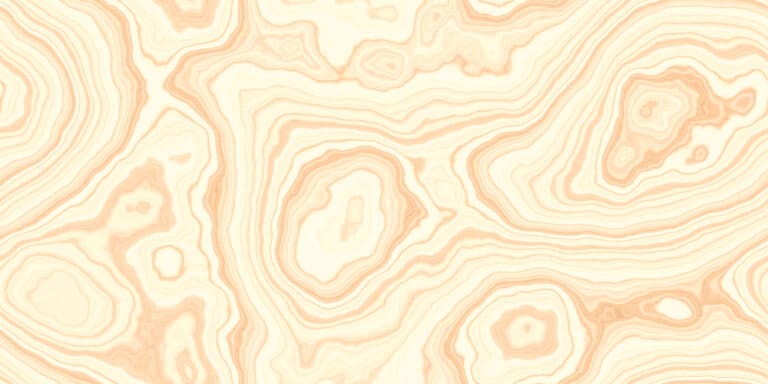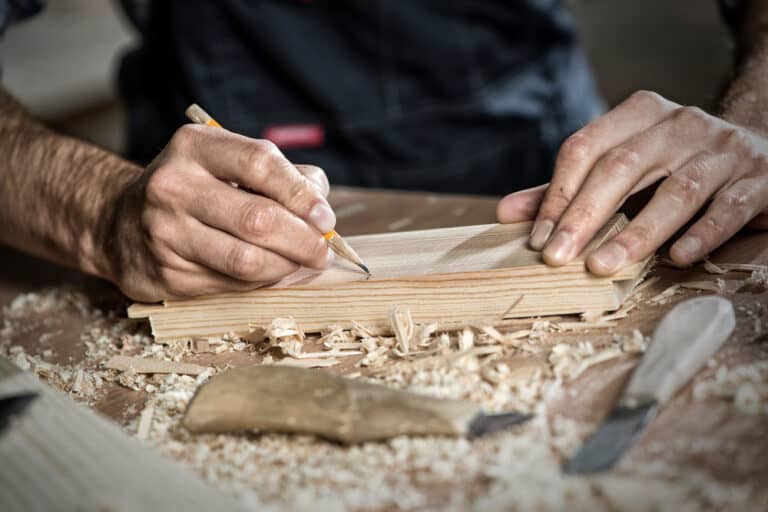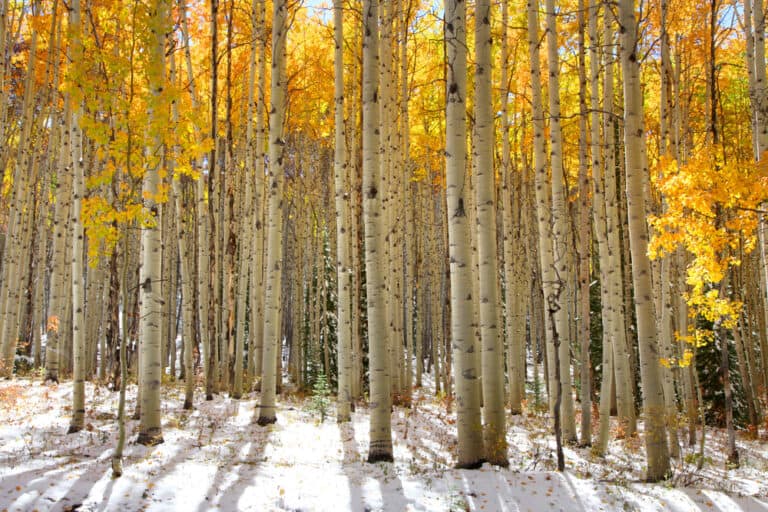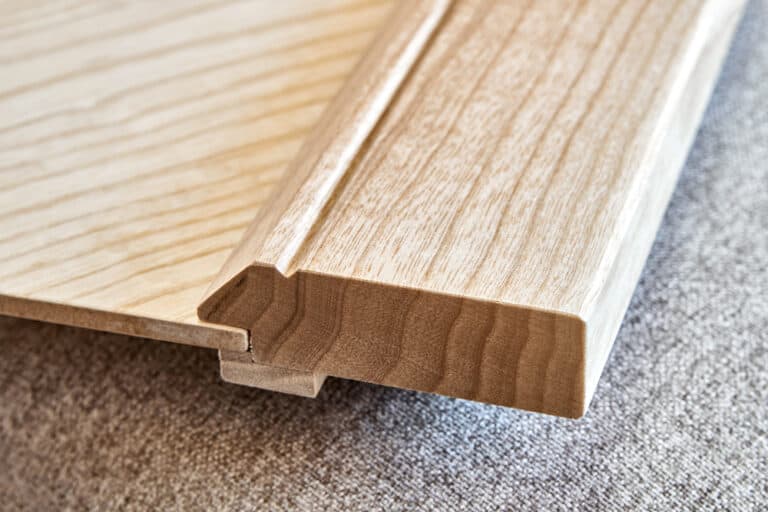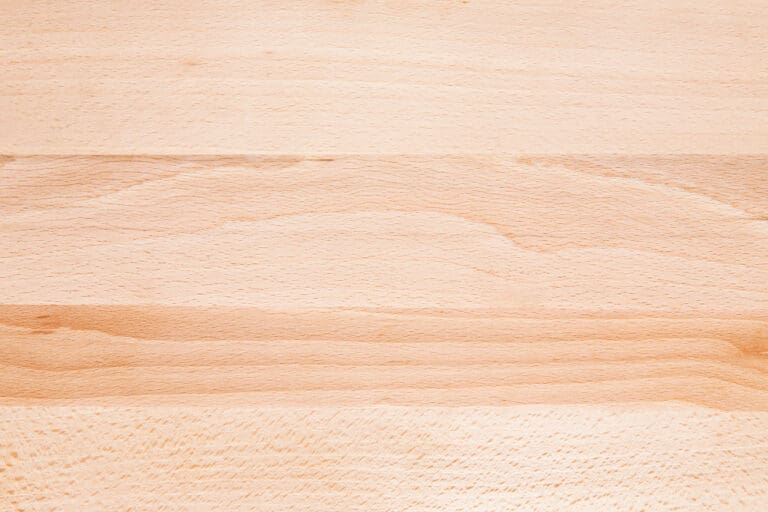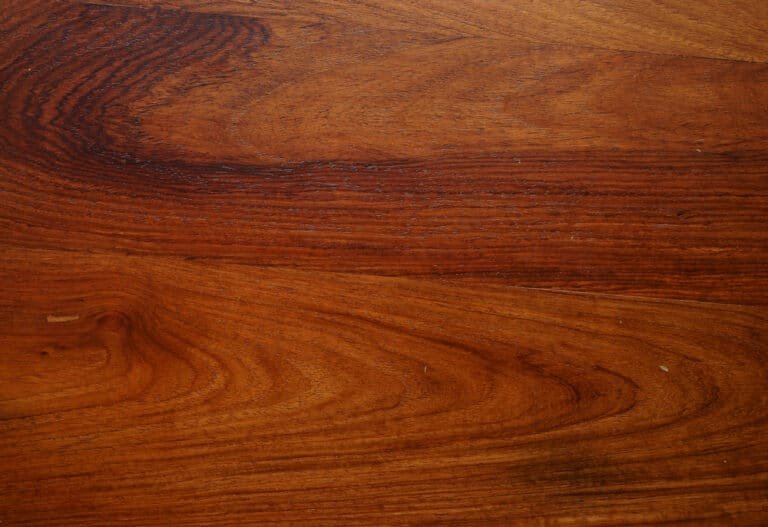Choosing the right wood is the most important decision you can make when getting started with wood carving.
Here are my Top Woods for Carving:
- Basswood (best for beginners)
- Butternut (alternative softwood option)
- White pine (best for relief carving)
- Black Walnut
- Aspen
- Cherry Wood (best hardwood)
- Maple Wood
1. Basswood
The best wood for beginners is Basswood. The soft texture and even grain pattern of Basswood make it easy to work with, allowing you to create detailed carvings with minimal effort. It’s light color helps accentuate the carving pattern, giving a beautiful result.
Pros:
- Basswood is soft, making it easy to carve with various tools such as knives, chisels, and gouges.
- It has a consistent and even texture, which allows for a smooth carving experience.
- Basswood is affordable and readily available in different sizes, making it an accessible option for all skill levels.
- Its light color highlights your carving patterns, showcasing your craftsmanship.
Cons:
- Being a softwood, basswood may not be as durable as hardwoods, making it less suitable for outdoor projects or pieces that require more strength.
- The wood’s light color may stain easily, requiring extra care when handling to avoid blemishes.
Click here to see the current price of Basswood carving blocks
2. Butternut
Butternut is great for wood carving for much of the same reasons as basswood. Its softness and straight grain make it easy to carve, while its light color and distinctive patterns provide an attractive finish.
Pros:
- Butternut is a softwood, which makes it easier to carve with hand tools or power tools.
- The straight grain of butternut helps in creating clean lines and smooth surfaces during carving.
- Its attractive light color and unique patterns make it an ideal choice for furniture and other decorative woodworks.
- Compared to hardwoods like black walnut, butternut is more affordable and easy to find.
Cons:
- Due to its softness, butternut may not be the best wood for carving intricate details or creating patterns that require high precision.
- It’s slightly less durable than hardwoods such as black walnut, which could be a concern if you’re looking to create long-lasting woodwork.
- Butternut is prone to insect attacks, so it’s essential to keep your carvings protected from potential damage.
3. White Pine
White Pine is good for carving due to its soft nature and even texture. It’s easy to work with and offers a uniform grain pattern that enhances your carving experience.
Pros:
- White Pine is a softwood, offering less resistance to carving tools, making it ideal for beginners just starting to explore wood carving.
- Offers an even texture and uniform grain pattern, allowing your designs to have a consistent appearance.
- It’s readily available in various sizes and dimensions, making it an accessible option for wood carvers.
- The medium grain of White Pine holds detail well, making it suitable for relief carving and intricate patterns.
Cons:
- Since White Pine is a softwood, it might not be the best choice for extremely detailed and complex carvings that require more durable materials.
- It ranks lower on the Janka scale compared to other types of wood, meaning it’s more susceptible to dents and damage from carving tools if not handled carefully.
- The light cream color of White Pine can limit the depth and contrast available when carving, compared to woods with more distinct colors and grain patterns.
4. Black Walnut
Black walnut is a hardwood known for its rich, dark chocolate-brown color, stunning grain, and pattern. This makes it a popular choice for both luxury and relief carving, as it can hold intricate details and responds well to carving tools.
Pros:
- Durable and long-lasting: Black walnut is a hardwood, making it strong and able to withstand the test of time.
- Takes detail well: Its hardness allows it to hold intricate details, making it perfect for detailed carvings.
- Excellent workability: Black walnut responds well to carving tools, making it easier for you to work with.
- Versatile: Its beautiful appearance makes it suitable for both relief carving and furniture making.
- Beautiful: It has a gorgeous grain and rich color, making it perfect for high-end carvings and furniture.
Cons:
- Expensive: Black walnut is often pricier than other types of wood, which might be a consideration if you’re on a budget.
- Hardness: While its hardness allows for excellent detail, it also means that you’ll need sharp carving tools (such as chisels and gouges) and possibly a mallet to work with this type of wood effectively.
- Limited availability: Black walnut might not be as readily available as other types of wood, depending on your location.
- Difficult to worth with: Carving black walnut requires advanced technique. It will be challenging for beginners.
5. Aspen
Aspen is a versatile wood that’s well suited to carving. This softwood is abundant in America and Europe, making it readily available and cost-effective. With its fine, uniform grain pattern, aspen can be easily carved using standard wood carving tools such as knives, gouges, and chisels.
Pros:
- Aspen is a softwood, which makes it easier for you to carve, especially if you’re just starting out with wood carving techniques.
- It has a fine, uniform grain pattern that allows for detailed carving patterns without the risk of splitting or chipping.
- Its widespread availability in America and Europe makes it an affordable option for wood carving projects.
- The light color of aspen provides a great canvas for painting or staining, allowing you to enhance the look of your finished piece.
Cons:
- Due to its softness, aspen wood might not hold up well to heavy-duty use or in outdoor applications.
- It can be somewhat challenging to achieve a smooth finish, as the soft nature of the wood can lead to fuzziness when sanded.
- Aspen’s Janka hardness rating of 380 makes it one of the softer woods for carving, which means that it may not be suitable for intricate designs requiring strong and durable wood.
- If you’re looking for a wood with a richer, more distinctive natural color, aspen’s pale appearance might not be your preferred choice.
6. Cherry Wood
Cherry wood is a popular choice for wood carving due to its workability and beautiful, unique patterns. Its flexibility, along with a range of colors, make it ideal for various applications, including relief carvings and furniture.
Pros:
- Cherry wood is more affordable than some hardwoods like walnut, while still offering a beautiful finish and durability.
- It is a workable hardwood, making it easier to carve with different tools such as gouges, chisels, and carving patterns.
- The Janka Hardness rating of cherry wood ranges from 950 to 1010, providing a good balance of hardness and carvability.
- Cherry wood’s natural color varies from blond to reddish-brown, allowing you to create visually appealing pieces without needing to paint or stain them.
Cons:
- While cherry wood is more affordable than some other hardwoods, it can still be pricier than softwoods like pine or basswood.
- The grain of cherry wood can sometimes be irregular, which might require more attention and skill when carving details.
- As cherry wood ages, its color may darken over time, which might not be desirable for some woodworkers.
- It may not be as readily available as other types of wood such as maple or oak, so you might need to spend some extra time sourcing your cherry wood.
7. Maple Wood
Maple is a popular choice for wood carving due to its straight grain and fine texture. Its hardness and density make it an ideal wood for creating intricate details. However, this might pose a challenge for beginners or those using hand tools because of the wood’s density. In general, maple is a reliable and beautiful wood for carving that can be used for various projects, including furniture and decorative items.
Pros:
- Maple wood has a straight grain and fine texture, making it easier to carve detailed patterns.
- It is a hardwood, providing durability for your carving projects.
- Maple is known for its attractive appearance, with warm and rich colors that can enhance the visual appeal of your finished project.
Cons:
- The Janka hardness rating of maple can make it challenging for beginners or those using hand tools.
- Maple wood may not be as easy to carve as softer woods like basswood or butternut.

